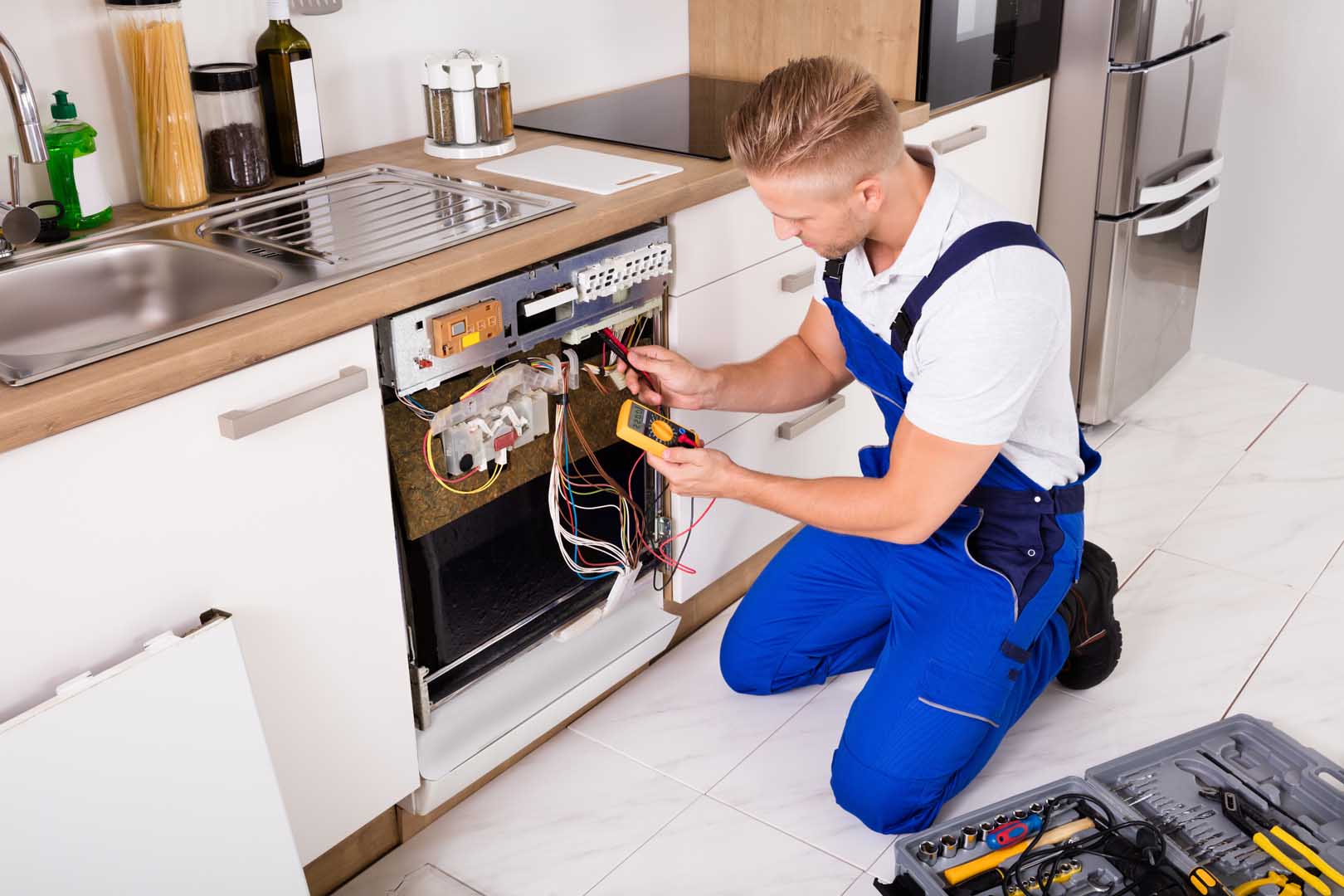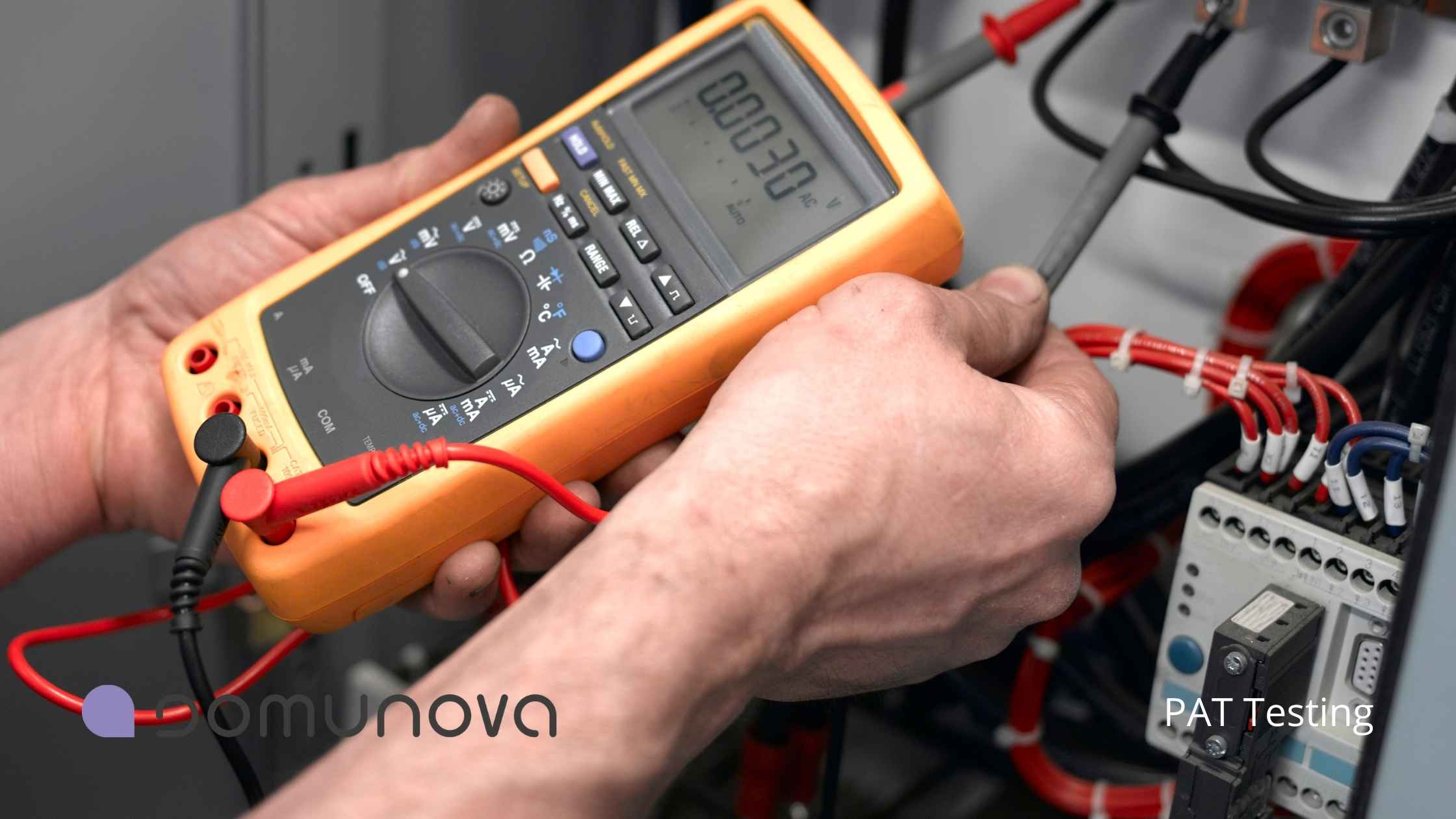PAT Testing
PAT or Portable Appliance Testing for commercial and domestic appliances in shops, offices, homes and lets.
Portable appliance testing (PAT) is an important safety measure carried out in the United Kingdom to ensure the safety of electrical appliances and equipment. This process involves a visual inspection and electrical tests to make sure that the appliance or equipment is safe for use.
The PAT procedure is important to understand, as it can greatly reduce the risk of electrical shock and fire.

PAT Visual Tests
The visual inspection is an important part of the PAT procedure, as it enables a qualified engineer to determine if there are any obvious safety defects which may not be detected by testing alone. The engineer will also check for signs of damage which could pose a risk, such as frayed cables or loose connections.
Once this visual inspection is completed they will then move on to the electrical testing stage of the process.
Portable Appliance Tests
Electrical testing involves using specialised equipment to measure and test the electrical conductivity of components within the appliance or equipment being tested. This ensures that any potential electrical problems can be identified and rectified before use, reducing the risk of shock or fire hazard in operation.
PAT tests must be carried out regularly to ensure continued safety of the appliance or equipment in question.
It is important to carry out regular portable appliance testing (PAT) to ensure that any potential danger from using electrical appliances and equipment is kept to a minimum. A qualified engineer should be employed for the visual inspection and PAT procedure, as they will have the necessary knowledge and experience to identify any potential risks quickly and effectively. By carrying out this procedure regularly you can greatly reduce the risk of electric shock or fire hazard, making sure your home or workplace remains safe.
Electricity at Work Regulations
“The Electricity at Work Regulations 1989 require that any electrical equipment that has the potential to cause injury is maintained in a safe condition. However, the Regulations do not specify what needs to be done, by whom or how frequently (ie they don’t make inspection or testing of electrical appliances a legal requirement, nor do they make it a legal requirement to undertake this annually).” – hse.gov.uk
Workplace PAT Testing
The UK Electricity at Work Regulations 1988 require employers to take all reasonable steps to ensure that any electrical equipment used in their workplace is maintained in a safe condition. As part of this, it is recommended that Portable Appliance Testing (PAT) be undertaken regularly. PAT involves visual inspection and electrical tests to make sure that the appliance or item of equipment is safe for use. The visual inspection is an important part of the procedure, as it allows a qualified engineer to identify any potential safety defects which may not be detected by testing alone.
The electrical testing stage of the PAT process involves using specialised equipment to measure and test the electrical conductivity of components within the appliance or item of equipment being tested. This ensures that any potential electrical problems can be identified and rectified before use, reducing the risk of shock or fire hazard in operation. It is recommended that PAT tests are carried out every three months or more frequently if needed, depending on usage levels and environmental conditions. The Health and Safety Executive (HSE) has also produced guidance on PAT which outlines when testing should take place and other relevant information, including details on what type of tests need to be undertaken.
As well as regular PAT testing being undertaken, there are also other measures employers need to consider in order to ensure their workplace remains safe from electrical hazards: for example, ensuring all items of equipment are clearly labelled with appropriate warnings; implementing a system for reporting faulty equipment; training staff in how to safely use any items of electrical equipment; and providing regular maintenance services where necessary. Employers must also keep records of all PATs carried out as evidence that they have taken all reasonable steps to ensure safety in their workplace environment.
Overall, portable appliance testing (PAT) is an essential part of any employer’s responsibility for health and safety at work under UK law, as outlined by the Electricity at Work Regulations 1988. Regular PAT tests can help reduce the risk of electric shock or fire hazard in workplaces across the UK, ensuring everyone remains safe while carrying out their duties.
Benefits of Professional PAT Testing
• Ensure safety of users through regular testing and maintenance
• Reduce risk of electric shock and fire hazard in the workplace
• Identify potential hazardous electrical problems before use
• Save time and money with a one-time test rather than multiple repairs
• Follow UK law obligations to provide a safe working environment

Reduce Risk in the Workplace
Portable Appliance Testing (PAT) is an important way to reduce the risk of electric shock and fire hazard in the workplace. The UK Electricity at Work Regulations 1988 require employers to take all reasonable steps to ensure that any electrical equipment used in their workplace is maintained in a safe condition and PAT testing helps achieve this.
Identify Potential Electrical Hazards
Portable Appliance Testing (PAT) is an effective way to identify potential hazardous electrical problems before use. In the PAT process, a qualified engineer will visually inspect and electrically test the item of equipment or appliance being tested, ensuring any electrical issues are identified and rectified before use.
Save Time and Money
PAT Testing saves time and money in the long run by allowing employers to perform a one-time test to identify any potential hazardous electrical problems and rectify them before use, rather than needing multiple costly repairs over time.
Follow UK Law
Portable Appliance Testing (PAT) is a legal requirement in the UK, as outlined by the Electricity at Work Regulations 1988. Regular PAT tests help ensure employers are meeting their obligations to provide a safe working environment and that the safety of users is maintained.
- PAT Testing County Louth
- PAT Testing Orkney Islands
- PAT Testing Falkirk
- PAT Testing Highland
- PAT Testing County Kerry
- PAT Testing West Lothian
- PAT Testing Monmouthshire (Sir Fynwy)
- PAT Testing Renfrewshire
- PAT Testing East Renfrewshire
- PAT Testing Hertfordshire
- PAT Testing Oxfordshire
- PAT Testing West Midlands
- PAT Testing County Meath
- PAT Testing County Waterford
- PAT Testing Caerphilly (Caerffili)
- PAT Testing Norfolk
- PAT Testing County Kilkenny
- PAT Testing Cornwall
- PAT Testing County Roscommon
- PAT Testing Ceredigion
- PAT Testing Staffordshire
- PAT Testing Tyne and Wear
- PAT Testing Herefordshire
- PAT Testing County Tipperary
- PAT Testing South Yorkshire
- PAT Testing Lancashire
- PAT Testing Somerset
- PAT Testing Rutland
- PAT Testing Isle of Wight
- PAT Testing Essex
- PAT Testing Glasgow City
- PAT Testing County Cavan
- PAT Testing Warwickshire
- PAT Testing Hampshire
- PAT Testing County Leitrim
- PAT Testing County Sligo
- PAT Testing Cambridgeshire
- PAT Testing Derbyshire
- PAT Testing West Sussex
- PAT Testing South Ayrshire
- PAT Testing East Ayrshire
- PAT Testing Denbighshire (Sir Ddinbych)
- PAT Testing Cardiff (Caerdydd)
- PAT Testing Dorset
- PAT Testing Blaenau Gwent
- PAT Testing Moray
- PAT Testing Cheshire
- PAT Testing County Offaly
- PAT Testing County Limerick
- PAT Testing Shetland Islands
- PAT Testing North Lanarkshire
- PAT Testing Kent
- PAT Testing Aberdeenshire
- PAT Testing Argyll
- PAT Testing Angus
- PAT Testing Bedfordshire
- PAT Testing Worcestershire
- PAT Testing Dundee City
- PAT Testing Carmarthenshire
- PAT Testing Wrexham (Wrecsam)
- PAT Testing Clackmannanshire
- PAT Testing County Longford
- PAT Testing East Dunbartonshire
- PAT Testing County Carlow
- PAT Testing Shropshire
- PAT Testing Pembrokeshire (Sir Benfro)
- PAT Testing Flintshire (Sir y Fflint)
- PAT Testing Merthyr Tydfil (Merthyr Tudful)
- PAT Testing South Lanarkshire
- PAT Testing West Dunbartonshire
- PAT Testing Inverclyde
- PAT Testing Cumbria
- PAT Testing Dublin
- PAT Testing Vale of Glamorgan (Bro Morgannwg)
- PAT Testing Northumberland
- PAT Testing County Westmeath
- PAT Testing County Clare
- PAT Testing Merseyside
- PAT Testing Conwy
- PAT Testing Powys
- PAT Testing East Lothian
- PAT Testing Surrey
- PAT Testing East Sussex
- PAT Testing Northamptonshire
- PAT Testing County Mayo
- PAT Testing Gwynedd
- PAT Testing Greater London
- PAT Testing Lincolnshire
- PAT Testing North Ayrshire
- PAT Testing County Laois
- PAT Testing County Durham
- PAT Testing Isle of Anglesey (Ynys Mon)
- PAT Testing City of Edinburgh
- PAT Testing Na h-Eileanan Siar
- PAT Testing County Donegal
- PAT Testing Devon
- PAT Testing Bristol
- PAT Testing Wiltshire
- PAT Testing Dumfries and Galloway
- PAT Testing East Riding of Yorkshire
- PAT Testing Bridgend (Pen-y-bont ar Ogwr)
- PAT Testing Rhondda Cynon Taf
- PAT Testing Swansea
- PAT Testing Scottish Borders
- PAT Testing County Monaghan
- PAT Testing County Galway
- PAT Testing County Wexford
- PAT Testing Neath Port Talbot (Castell-nedd Port Talbot)
- PAT Testing Perth and Kinross
- PAT Testing Suffolk
- PAT Testing Fife
- PAT Testing Stirling
- PAT Testing West Yorkshire
- PAT Testing North Yorkshire
- PAT Testing County Cork
- PAT Testing Buckinghamshire
- PAT Testing Leicestershire
- PAT Testing Midlothian
- PAT Testing County Kildare
- PAT Testing Nottinghamshire
- PAT Testing Greater Manchester
- PAT Testing Torfaen (Tor-faen)
- PAT Testing Gloucestershire
- PAT Testing Berkshire
- PAT Testing Newport (Casnewydd)
- PAT Testing County Wicklow
